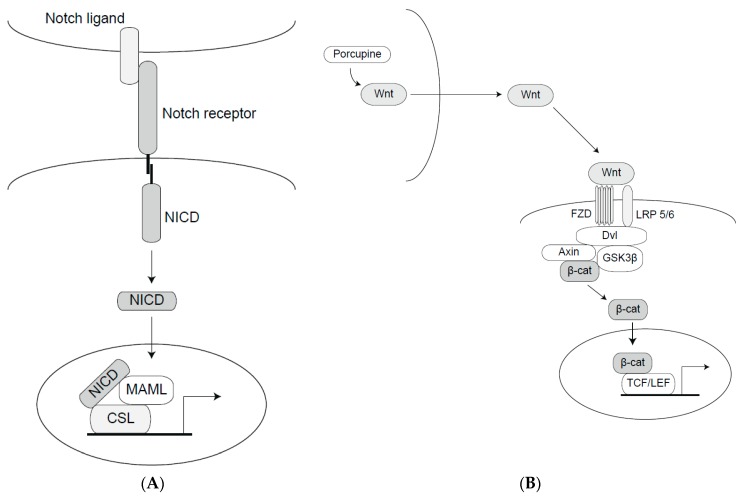Figure 1.
The Notch and Wnt signaling pathways. (A) The Notch pathway. A schematic depiction of the proteins in the core Notch signaling pathway. Upon ligand-receptor interaction, the Notch intracellular domain (NICD) is released and forms a ternary complex with MAML and CSL (a DNA-binding protein) in the nucleus to control downstream gene activation. (B) The canonical Wnt pathway. The Wnt ligand is modified by porcupine in the ligand-producing cells and interacts with the Frizzled (FZD) receptor. The ligand-activated FZD and Low Density Lipoprotein Receptor-related Protein (LRP5/6) receptors downregulate the activity of the destruction (Dishevelled (Dvl)/Axin/Glycogen synthase kinase 3β (GSK3β)) complex, leading to accumulation of β-catenin (β-cat), and its localization to the cell nucleus. In the nucleus, β-catenin cooperates with T-Cell factor/lymphoid enhancer factor (TCF/LEF) to regulate gene expression.

